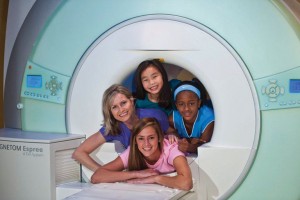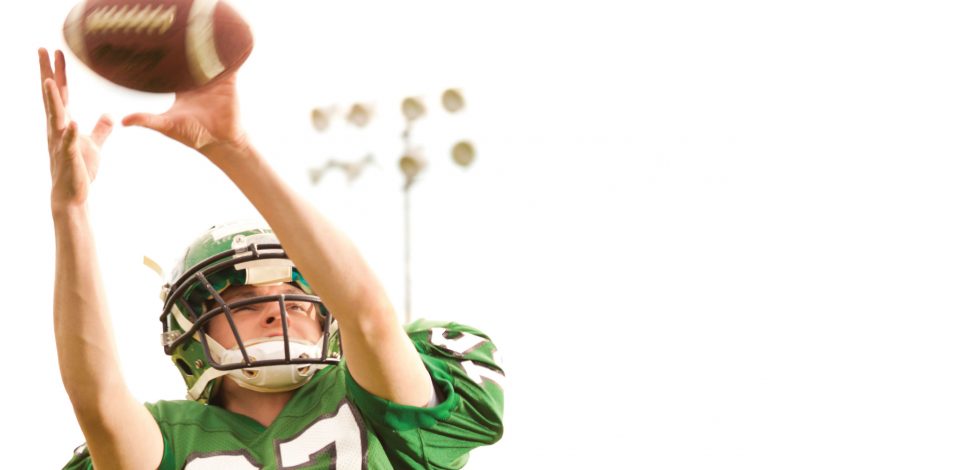Be Aware, Take Care and Wear Protective Gear
by Karyn Brodsky | Staff Writer
With a new school year comes a new season of school sports for teens. And with that comes the commitment to two-a-days and practice, the intensity of play, coaches’ demands, the pressure to be the best they can be, and of course, the fierce competition. You can just feel their adrenaline pumping…until someone gets hurt.
As parents we share our teens’ passion for perfection and peak performance in sports, yet a little voice in the back of our heads warns that they could get hurt. Is it possible to have it both ways? It’s time to ask yourself: is your athlete really ready? Every season it seems that there are new challenges and new chances for injury; but also new ways to protect our kids with newer and better technology.
Dr. Nick Peters, Executive Medical Director of Advance ER 24 Hour Emergency Center in Dallas says that the proper sports gear is paramount to helping prevent injuries. “Equipment has come a long way and today can help decrease the likelihood of all injuries.”
Natasha Adelstein of Highland Park, IL knows the importance of proper equipment and how rapidly safety technology evolves all too well. On June 28, 2014, her son Adam, a 17-year-old pitcher on his high school baseball team, was hit by a speeding fly ball in the head and jaw. His jaw was severed and he experienced internal brain hemorrhaging, causing him to undergo a craniotomy which is serious brain surgery.
Had the surgical team not performed surgery immediately, Adam could have bled out and died because the artery inside his skull was partially severed. Natasha says, “Had there been a Kevlar® liner in Adam’s hat, it would have protected Adam and made his injury less severe.” She explains, “Kevlar® is a recently introduced material not widely available one year ago.” She advises other parents to research the latest protective gear and to make sure your teen uses or wears it.
In addition to serious injuries like Adam’s, many doctors report seeing acute traumatic injuries like fractures, sprains or concussions. Dr. Kwabena Blankson, a pediatrician with subspecialty training in Adolescent Medicine, says, “Joint sprains can occur during practice or game play but can also commonly occur when a previous injury is poorly rehabbed.” He also notes that concussions can occur in many sports. “It’s a common misconception that concussions only occur in contact sports like football. But rotational forces, experienced in sports such as gymnastics and cheerleading, can also lead to concussion.”
Another hot button in the world of teen athletes revolves around cardiac issues. While they are rare in teens, Dr. Blankson says the most important thing a parent can do to protect their child is to know their own family cardiac history. “Teens with chest pain with exercise or a history of passing out with exercise should be evaluated by a doctor.”
Dr. Peters also sees over-use injuries such as tendonitis and strains in teen athletes. “Over-use injuries can be more insidious as they develop slowly,” notes Dr. Peters.
So how does a parent know if their injured teen needs immediate attention? In the case of acute traumatic injuries, parents and coaches can usually tell, but in the case of concussion, it’s not always so obvious. Dr. Peters recommends that if there are any symptoms, it’s wise to take the teen to a doctor. If symptoms are mild, they can wait to go to the family physician. If they are severe or if someone is vomiting or knocked unconscious, “go to the ER and get them checked right away,” says Peters.
For less severe injuries, a variety of tests like x-rays, MRIs and computerized tomography (CT) scans can indicate treatment protocols. Stephanie Corbin-Helms, Marketing Director of Envision Imaging with 17 locations in the Dallas-Fort Worth area notes, “typically, a patient’s physician and/or urgent care facility usually reviews the injury first and makes the determination during their course of treatment if they need any diagnostic procedure.” Usually, the first test is an X-ray followed by MRI or CT if the symptoms persist and the X-ray doesn’t show any clean breaks. The MRI and CT can determine more of a cause of persistent symptoms by reviewing smaller fractures, tears, or ligament damages. “After, [we] return a diagnostic report to the treating physician in order for them to make a determination of treatment,” explains Corbin-Helms.

Corbin-Helms says Envision Imaging performs all imaging, including MRI, CT, Ultrasound and X-Ray. Not only do they have radiologists on-site, notes Corbin-Helms, “we are fortunate to have radiologists that specialize in Neuroradiology and Musculoskeletal for brain and sports injuries. Neuroradiologists are key in diagnosing head injuries, and brain abnormalities.”
Currently, for concussions, Envision has a unique outpatient MRI scan in two locations: In Keller there is specialized MRI software that specifically targets concussion or head trauma injuries. The South Arlington location, says Corbin-Helms, offers truly advanced technology. “We are the only outpatient facility in DFW to be partnered with CereScan. This partnership provides MRI brain scan imaging and SPECT imaging.
Corbin-Helms agrees that when it comes to teens and sports injuries, it definitely is a new world. For instance, there are more teenage girls competing in athletics than ever before, so there is an upward trend in sports injuries in that demographic. And, in addition to traditional sports, there are also injuries from gymnastics and cheerleading.
So how does a parent protect their teen from sports injuries in an ever-changing world? Dr. Peters sums it up. “Good coaching, safe equipment and proper technique.”


